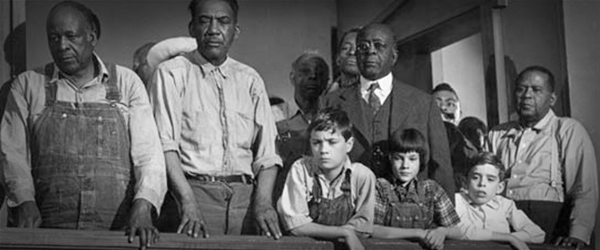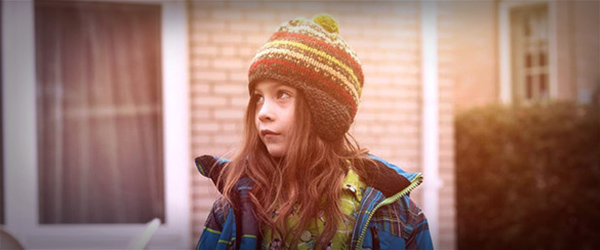Old v. New: The Child’s POV in ‘Room’ and ‘To Kill a Mockingbird’
Do you remember what it was like to be a child? To dwell in your house and think it was a castle, or play in the schoolyard and think it was an acre? To see strangers and assume they were all nice? Well, for two different novelists working in very different decades, the idea of using a child’s perspective to tell a troubling story proved fruitful, resulting in a pair of unique books that were later adapted into history-making feature films.
Harper Lee’s To Kill A Mockingbird was published in 1960, telling the story of an ugly court case between an innocent black man and an aggrieved white family in 1930s Alabama—as seen through the eyes of six-year-old protagonist, Scout and her brother, Jem. When the novel was adapted into a film by screenwriter Horton Foote and directed by Robert Mulligan in 1962, Scout’s perspective was recreated with cinematic grace.
Fifty-three years later, eventual Film Independent Spirit Award winner Emma Donoghue adapted her own novel, Room—about a young boy named Jack living with his abducted mother in a locked shed, and their subsequent transition back into the real world—into a screenplay directed by Lenny Abrahamson. Again, Abrahamson and cinematographer Danny Cohen recreated an incorruptible, childlike view of a crooked situation.
When you look at these two films, the similarities are profound, despite superficial differences in production era, cinematography, acting style and basic storyline. When you read the novels it’s easy to pick up on the first-person perspective from the narrators’ language and use of pronouns such as I, we, our, etc. And while both films maintain elements of the books’ prose through the use of first-person narration, it’s the camera that truly lets the viewer appreciate each world with the naïve nuance of a seven-year-old girl or five-year-old boy.

Mulligan’s To Kill a Mockingbird script begins with a shot of the sky as seen through the trees, looking down only when a child reaches out to play in its branches. We’re then introduced to a small Southern town with a few small horses, dusty paths and townspeople making their way in the heat. This is Scout’s world.
Room begins with a shot of the ceiling—a dirty, glazy skylight just barely letting daylight in onto a tiny bed, with a child’s drawings pinned to the wall nearby. This is Jack’s world.
These are subtle beginnings, yet powerful ones. Both Scout and Jack live in small worlds tainted by adult decisions, but they’re always looking up—both literally and, in a deeper way, at their sky, their world and their parent.
Both films set out to visually explore the relationship between child and parent, one of the most important factors in how children grow up to be introduced to the “ugly” adult world and their response to it. Both Gregory Peck (Mockingbird’s Atticus Finch) and Brie Larson (Room’s Joy, aka “Ma”) won Academy Awards—and Larson, a Spirit Award—for their performances as parents trying to protect their children from the bad things in life without painting a perfect picture of the world.
Each interaction between the child/parent sets is framed so that that the child looks up to the parent, oftentimes yearning for a hug or another sign of affection. Scout is a little older, and just beginning to learn how hatred manifests itself in different forms like racism, class separation, etc. But somehow the film isn’t a story about this hate—it’s about a young girl who witnesses these pernicious forms of hatred in-between the cracks of normal, everyday things like going to school, dressing up as ham for a class presentation or staying up late to explore the “gifts” left by recluse Boo Radley in the neighborhood tree. Even during the film’s centerpiece trial—in which Scout’s father Atticus defends a black man accused of raping a white woman—the scenes are tough to watch, but the focus is on Scout and Jem as they watch their father do the right thing, reacting as the townspeople either respect Atticus or scoff at him. In the children’s eyes their father can do no wrong, but for how long?

Conversely, Jack’s only human interaction until he’s five is with his mother—thus, his love and connection to his “Ma” is even more defined. Even though his mother and the audience are aware that he’s in one of the worst situations a child could be in, Jack is happy. He laughs, plays, watches TV and has an imaginary pet—just like most kids. Even when bad things happened, like when their captor “Old Nick” comes in at night to be with his mother, Jack is only able to see from the small cracks in the wardrobe where he sleeps, distracting himself with a small toy.
Possibly one of the most significant parts of telling a story from a child’s perspective is how that perspective changes from beginning to end. Inevitably, there’s a loss of innocence. And in these films it’s a subtle loss—not cold-blooded theft, as happens in other films (i.e. Beasts of No Nation). Scout and Jem hear about the murder of the man whom their father so passionately defended. This sets a somber tone for the film, but it doesn’t end there. To Kill a Mockingbird ends with Scout’s satisfaction at having met the man she was supposed to be afraid of (Radley) and even holding his hand. One of her last lines of narration is, “One time Atticus said you never really knew a man until you stood in his shoes and walked around in them; just standin’ on the Radley porch was enough.” In this, Scout finally comes to understand the lesson her father has been trying to teach her since the beginning of the film.
In Room, the final on-screen interaction between Jack and Ma happens during their post-escape visit back to “Room”, where Jack finally says goodbye to the place where he lived his first five years. In a powerful moment of maturity and revelation similar to Scout’s, Jack tells Ma to “say bye to Room.” He is no longer the child attached to the confinement, and Scout is no longer the child who believes that people are only either good or bad. For each, their world has become both larger and more bittersweet within the space of one well-told, economical film. For most of us, it takes decades.
Watch Room screenwriter Emma Donoghue accept the 2016 Film Independent Spirit Award for Best First Screenplay:
And not to be outdone, watch Room’s Brie Larson accept the 2016 Film Independent Spirit Award for Best Female:
To learn more about Film Independent, subscribe to our YouTube channel. You can catch up with the rest of our blog here. And to learn how to become of Member of Film Independent, just click here.